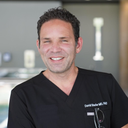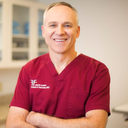I am desperate to know what to do. Seven weeks ago, I had a bilateral upper blepharoplasty. The plastic surgeon cut not only my eyelids but right out onto my face by more than a centimetre, above the corner of my eye, extending diagonally towards my brow. This has left me with two ugly thick scar lines which make me look like a clown. The edges of the cut are not joined tightly, particularly on the right side of my face, and I have a thick open ridge which is so ugly. I feel like a freak. I don't know what to ask for or what can be done to improve this.
Answers (21)
From board-certified doctors and trusted medical professionals

Dr. Tanuj Nakra, MD, FACS
Oculoplastic Surgeon, Board Certified in Ophthalmology
Answer

Dr. James R. Gordon, MD, FACS, FAAO
Oculoplastic Surgeon, Board Certified in Ophthalmology
Answer

Dr. Kenneth D. Steinsapir, MD
Oculoplastic Surgeon, Board Certified in Ophthalmology
Answer
More Eyelid Surgery Questions
See all Eyelid Surgery Q&AWE SEND PRETTY
EMAILS
What’s trending? Who’s turning heads? Which TikTok myths need busting? We’ve got you. No fluff, no gatekeeping—just real talk. Get our free, unfiltered newsletter.






